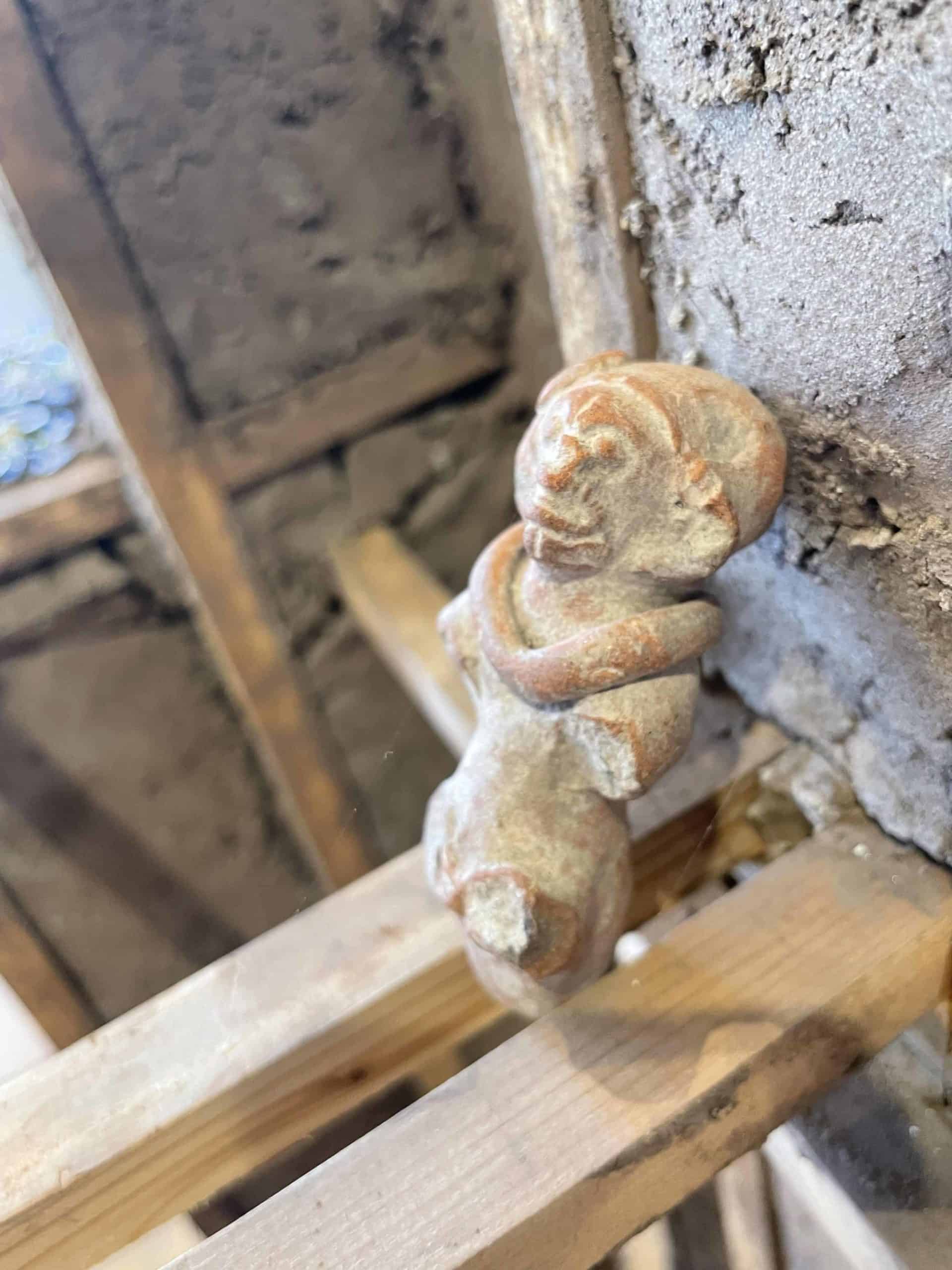Ceramic fire pots slope against the brick, imprinted with patterns of leaves. Last summer in the Berkshires, people gathered around them on warm nights or sat by themselves, feeling the flame inside the clay wall. In her new installation at Mass MoCA, Lily Cox-Richard has balanced care for the natural world and care for the people in it.
In her work, curator Denise Markonish Markonish finds an immediate shared curiosity for the world. An she smiles at Cox-Richard in a conversation over zoom across severla hundred miles.
This spring, Markonish sets Cox-Richard’s Weep Holes alongside an exhibit by Cox-Richards’ teacher and mentor, Amy Haupt, and Marc Swanson’s Memorial to Ice at the Dead Deer Disco, as he explores his love of the woods and the nightclubs where he danced and found community as a young man, the loss of Climate Change and the AIDS crisis. And Cox-Richards gives her own perspective on community and living ecosystems, loss and healing.

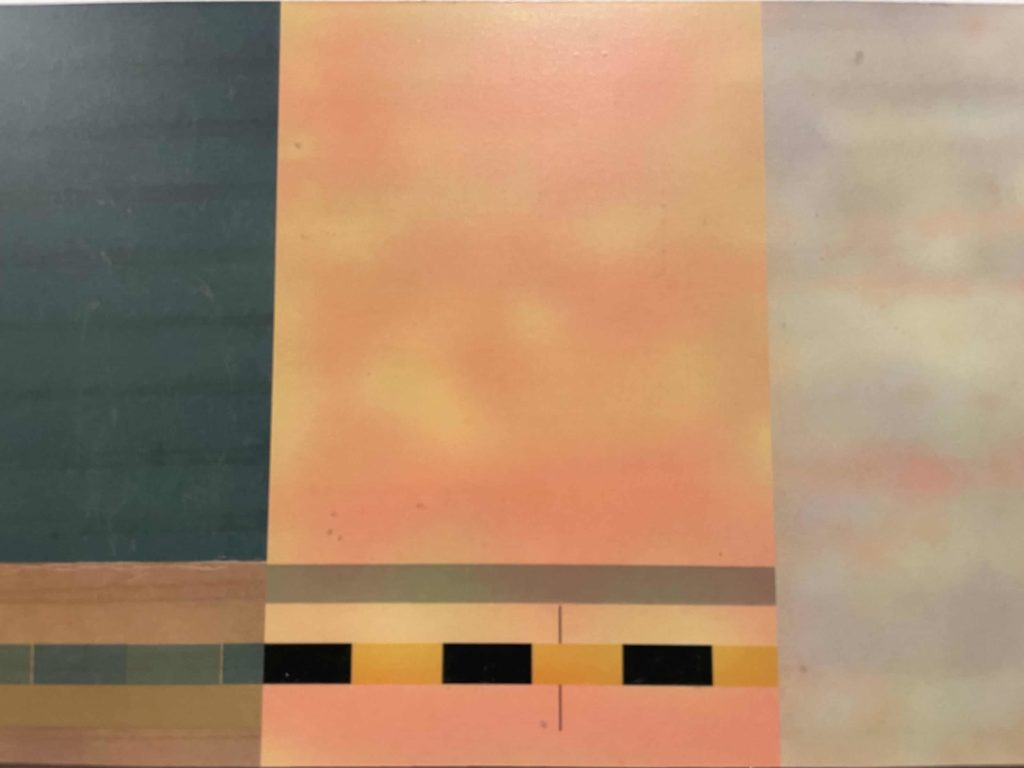

In Weep Holes at Mass MoCA, Lily Cox-Richard has woven a fire hose around pillars like a fiber around splints in a basket.
“I wanted people who would connect to one another and support each other in that weird process that making an exhibition is,” Markonish said, “and I think … the volleying back and forth of utter seriousness and utter absurdity …”
Cox-Richard creates her work in Tsenacomoco territory, she says over Zoom, in Richmond, Va., on land that has been inhabited and cared for by the Pamunkey, Monacan, Chickahominy, and many other nations for thousands of years. But she and Markonish first met five years ago, when Cox-Richard was living and working in Texas.
They began talking about this show in early 2017, just after the election, she said, and they originally planned it to open in 2021 (before Covid delayed it). And Cox-Richard too was looking toward a different future.
“I thought, we’ll have a new president by then,” she said. “Because it was all feeling very fresh. But it was hard to imagine what that would look like or what would happen between now and then. It seems hilarious to think back on that — we had no idea what we were in for.”
Planning this show across five years, she had to adapt and adapt again, she said, to find the throughline of the work. As politics, conflicts, climate change and the pandemic have brought challenges she could never have predicted, some elements of the show have strengthened while others have fallen away, and what felt more relevant felt most right
“It’s longest lead-time I’ve ever had,” she said, “and it felt like the context of the world was shifting constantly in that moment. I was thinking about value, and how we reckon with value and the value … of people’s lives. It felt like that context was changing daily.”
In that time, some elements of the show have taken on new meanings.
“Sand bags have a new resonance,” she said, “after seeing images and monuments of cultural importance in the Ukraine protected by (them). I was thinking before more about other kinds of frontlines, but also climate change, trying to keep (out) flood water.”
She is finding new uses for materials that have outlived their first use. A fire hose, now too worn to carry that weight of water, weaves around a row of pillars like basket splints. And she is playing with abundant organic resources. Kudzu vines bind wooden tomato frames together into tall, slender stars.
“What has stayed has continued to feel important,” Cox-Richard said — “stewardship, cleaning up the mess on the other side of something … and ways to create or maintain connection with people when there’s a need for isolation that neither of us had imagined in the beginning of this.”
‘What has stayed has continued to feel important — stewardship, cleaning up the mess on the other side of something … and ways to create or maintain connection with people when there’s a need for isolation that neither of us had imagined in the beginning of this.’ — Lily Cox-Richard
She named the show weep holes for the architectural openings that let water travel freely through a building or a wall. It felt like a beautiful analogy for the way that energy moves through the world, she said, creating resistance and giving freedom.
One element in the show has become a community gathering point on its own. Around the corner from what looks like the farthest room, at the top of a fire exit, a fire hydrant from North Adams, given by the city, stands decked in beads and yellow roses, with a wreath of bright yellow chrysanthemums at its feet, like a family offering to loved ones for día de los muertos.
“In the final days of install,” Cox-Richard said, “it became a kind of alter for me in making the final parts of the show, and a place of ritual — and then it has accumulated several offerings since I left. … A cigarette appeared next to it and some new stones … so I know other people have made offerings there.”
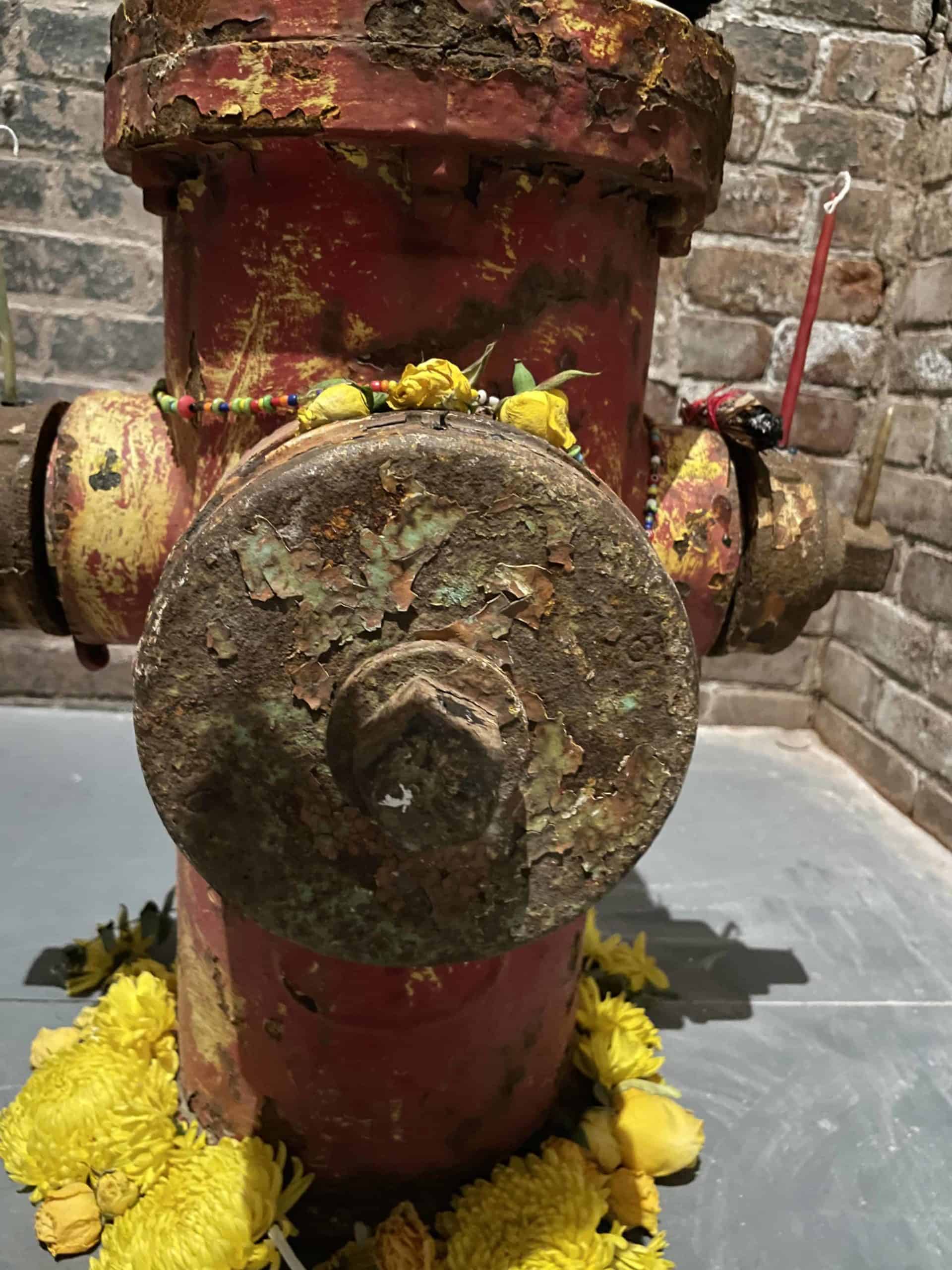
In Weep Holes at Mass MoCA, Lily Cox-Richard has made a fire hydrant into a community memorial.
She thinks of it as a witness, she said. The story goes back to Richmond in the summer of uprisings. She saw a wig on a fire hydrant and thought it was funny and stopped to take a photograph. Police accused her of tampering with a fire hydrant, and the tense exchange that followed has stayed with her.
“It was a moment where I differently understood the privilege that I had had in earlier interactions with police officers,” she said, “and that relationship, and what was changing — and what I was witnessing, what I saw unfolding in my own body and the people in front of me.”
It can be exhausting, she said, to carry other people’s hostility, and it can make you feel feel divided in yourself. She recalled writers like Audre Lourde, making the argument that when someone feels confident, alive and present in her own body, she can have the strength to support people around her and bring them together.
In the years after the 2016 election, being kind can feel like a revolution, Cox-Richards said. She has felt such a prevailing pressure toward hostility and division that it can feel like an act of political courage to care for your neighbors, your community and yourself.
And so and she feels a tie between caring for people and community and caring for the land, as she feels a connection with the land as close in its own way as a connection to people close to her.
“My only committed relationship is with mushrooms,’” Markonish remembered Cox-Richards writing in the show catalog. What does it mean, she and Cox-Richard ask each other, to have a committed relationship with the land — a reciprocal friendship across the years?
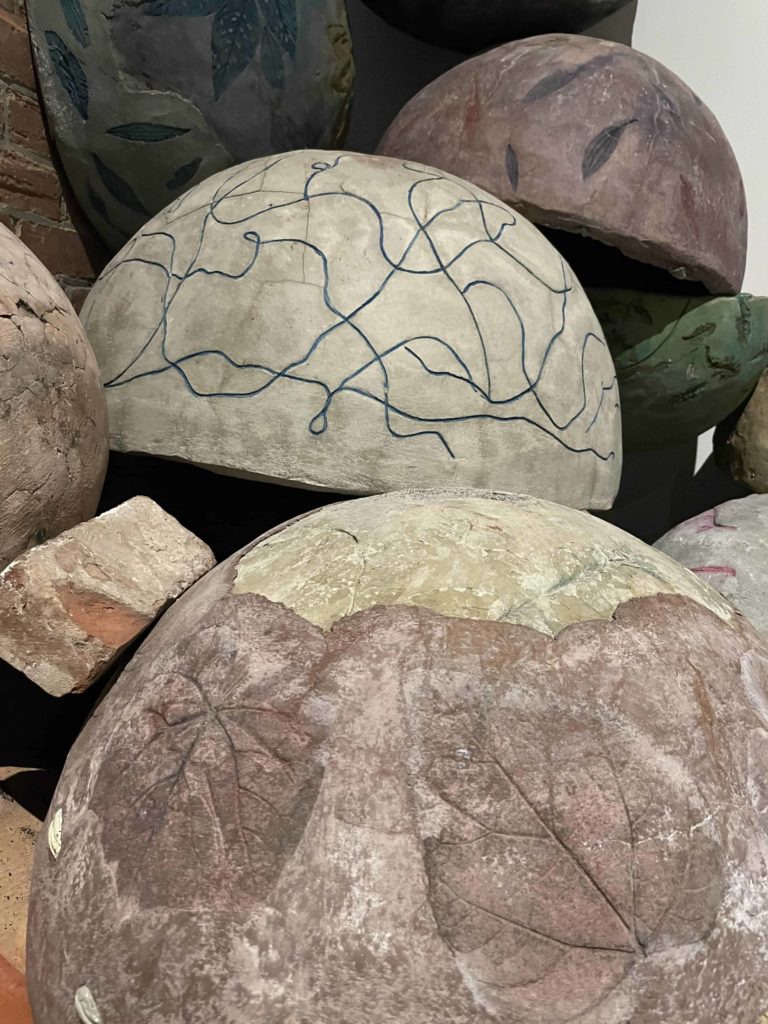
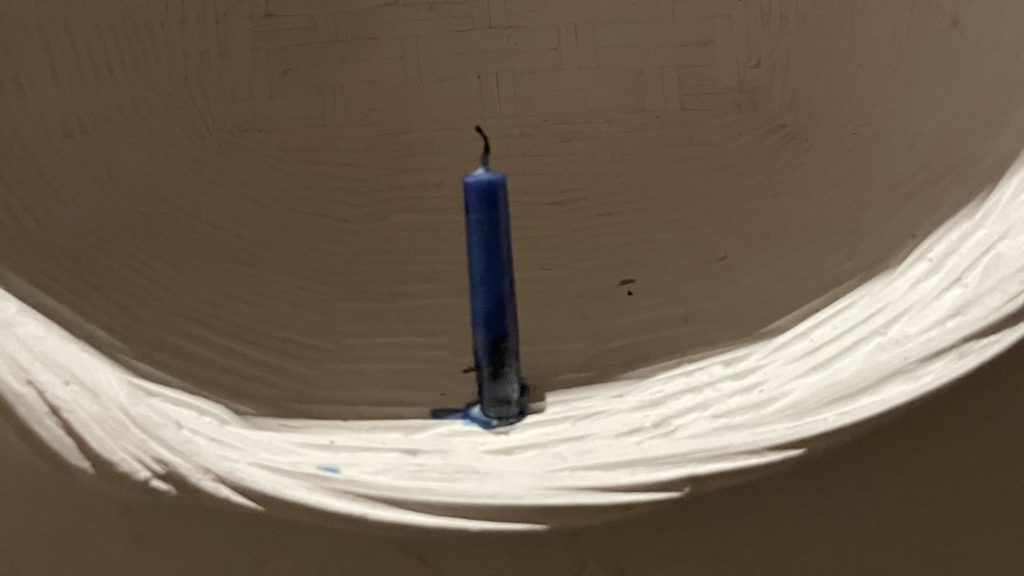

In Weep Holes at Mass MoCA, Lily Cox-Richard has woven tomato frames into starbursts with kudzu vines.
Throughout the show, in many ways, she considers practices that harm the land — like plastic and the garbage thrown away that will never break down — and practices that can heal, over time. Re-using material instead of finding it new may take more time and resources, she said, and she thinks it can be have a lasting effect, when people look closely at what they can find around them and work with what they have, and nothing is wasted.
“I think of the kudzu and tomato (frames),” she said, “and the ridiculousness of trying to weave kudzu onto a trellis when it’s going to do what it wants to do — it can grow up to a foot a day. … But I was interested in kudzu because it’s a very renewable resource.
“There’s a woman named Nancy Basket who’s an indigenous woman living in South Carolina who’s an incredible kudzu weaver and basket weaver, and she has this beautiful relationship with kudzu as a material. And even though it’s so maligned as an invasive species, she says well it’s here, and it has medicinal properties and all of these great strengths as a weaving material, as a building material, it has nutritional value, so let’s just use it.”
And she grins at the exuberance of kudzu stars tumbling into the room as though they have blown or grown together.


